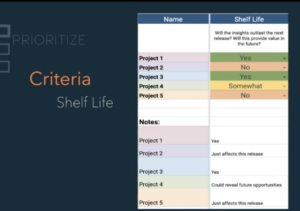AR2021-What is Research Strategy? (Chris Geison, Senior Research Strategist, Workday)



—> You are the reason of this talk, I’m tired of seeing researchers I respect, doing work that wastes their time and talent

-
But we do deserve this seat of the table
-
But we need to get more strategic part of about our practice

-
My concern is that focusing on leadership, excludes research consultants, teams of one, non-profits, etc.

—> My title says I’m a research strategist, so many people ask what is research strategy

-
I was conducting foundational research to demonstrate to the org that research could drive strategic decisions



-
At end of presentation, there is a link where you can access resources discussed during course of talk, and invitation to join him
-
Need people in space who are interested in this work, to collaborate with him, and define research strategy

-
Libraries could be filled trying to figure out that definition

-
Researchers need to get better at saying no, otherwise they have no strategy, but just sense of urgency
-
Don’t feel bad if you don’t
-
Kate Towsey of ReOps, ran a workshop and attendees included leaders from all big companies
-
She got many blank stares and question marks, when she asked these leader about their strategy
-
-
Marketing, Sales, IT will provide a strategy. Why can’t research do the same?
-
Otherwise research won’t be taken seriously

-
Locus of decision making (individual, team, org)
-
Org structure
-
UX maturity level

-
Define strategy
-
Collecting research opportunities
-
Prioritizing opportunities
-
Measuring research actvitiies

-
Defining through a mission statement
-
Collecting through question workshops
-
Prioritizing through assessment grids
-
Measuring-it depends, but I have some thoughts on that too

-
This is a default research strategy
- Driven by most urgent demands, greater political clout, and the rest put into a backlog
-
But what are we saying “no” to here?
-
What are we not doing ?
-
Who determines what is important, and does a small number of users get minimal attention?
-
-
Looks to be optimizing product, rather than doing foundational, generative work

-
What kind of impact?
-
What will it take?
-
Your SWOT?
-
What is your value proposition? You should say this succinctly and compellingly.
-
What are you saying no to?
-
How to measure success?

-
Shout-out to Sinead Davis Cochrane for providing this inspiration

—> Goal of questions workshop is to see unknowns in the research project

—> The workshop can be run to address whenever you want to address: a backlog, new priorities, new teams forming, etc.

-
Manager, researchers, designers, PMs (depending on org)
-
Goal to develop muscles for good research, and questions for the business
-
Since teams are a site of good thinking
-
-
Create a space where surfacing ideas is critical

-
Two themes (People/Product)
-
Revealing Objectives or Driving Objectives (the solution space)


-
Facilitating discussion is critical as goal of any framework is not to answer question, but provide a structure for discussion
-
Surface issues, clarify issues, and document them
-

—> Do an assessment matrix whenever you complete a questions workshop


—> Purpose of simplicity criteria is to figure out how much work is required.

—> Risk is critical column and can determine ultimate prioritization, but need to place it against other factors

—> The value to users, organization, or specific to research organization itself, will show case research orgs ability to do certain things

-
Don’t assume every project requested has strong buy-in. Be clear on what level of stakeholder buy-in is required to help determine level of resources, and level of partnership

-
We need time to implement significant findings
-
And if users don’t see utility of solution, is there time to check what can be done?



-
Or is there?

-
Did project achieve aims?
-
Was the research used by stakeholders?
-
There are lot of metrics that float around orgs, and PMs are assessed on certain metrics like reducing churn, usability scores, etc.
-
Researchers need to ask what these metrics are, and ask whether project achieved the aims of these metrics in some way
-
-
This can be measured and can be tracked and can be done

-
I hope you’ll join me, as I want us to get this right together,
-
What to address if organizational objectives are many?
- What’s an example of a project / initiative / research study you’ve said no to?
-
What happens when you feel you need to say no to leadership? How does leadership respond?
-
Thing to keep in mind is that by saying “no”, you are saying “yes” to something else.
-
You have limited resources and need to figure out where to invest
- To what degree can we build a useful/helpful research strategy when the organization itself doesn’t have a well-formed mission or strategic perspective?

